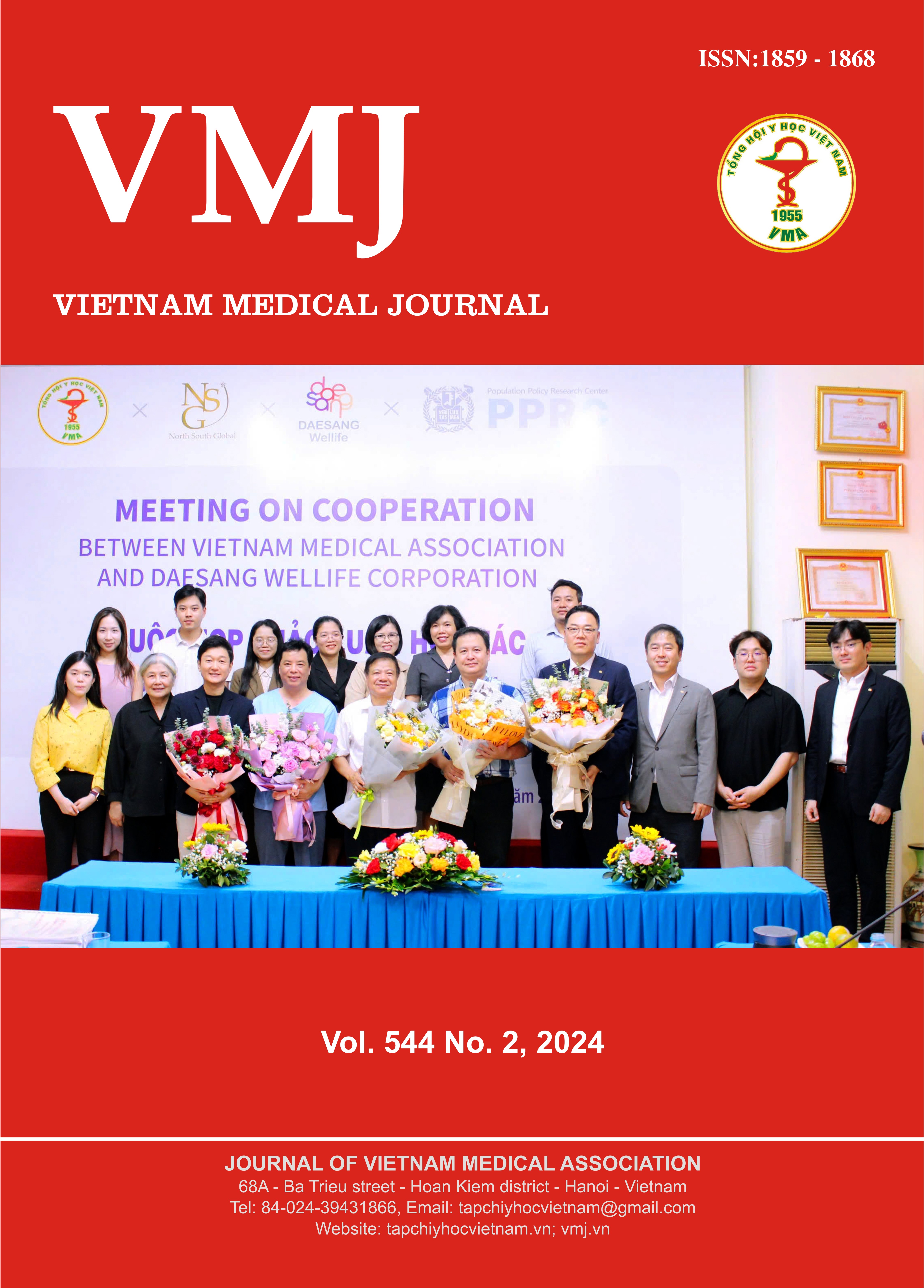A SYSTEMATIC REVIEW OF BLOOD LIPID PROFILES IN VIETNAMESE ADULTS FROM 2010 TO 2023
Nội dung chính của bài viết
Tóm tắt
Background: Dyslipidemia, which is caused by abnormalities blood lipid profiles including increased total cholesterol, triglycerides, LDL-C, and decreased HDL-C, has posed significant health risks including cardiovascular diseases, diabetes mellitus type 2, and other pathologies for people over the world, Vietnam included. The purpose of the systematic review was to focus on the information of blood lipid profiles including the mean value of blood lipid indicators and the prevalence of dyslipidemia among Vietnamese adults in the last 13 years from 2010 to 2023. Method: We explored studies reporting data in adults residing in Vietnam based on key terms such as dyslipidemia, blood lipid, cholesterol, LDL, HDL, triglyceride. The included studies were extracted from Pubmed/ Medline, Web of Science, Embase, CINANL, and 26 websites of medical-related journals in Vietnam. The publication timeframe of included studies ranged between January 01, 2010, to December 31, 2023. The selected studies had an observational study design. Studies that were pulished in languages other than Vietnamese and English were not considered for this systematic review. Findings: 105 articles were included in the systematic review. The mean value of TC, TG, HDL-C, and LDL-C of reported data was ranged from 3.38 to 6.79, 1.06 to 4.96, 0.96 to 1.96, and 2.00 to 4.36 mmol/l, respectively. The mean prevalence of dyslipidemia of included articles was 67.6%. The majority of articles (21/49) reported the prevalence of dyslipidemia as more than 75%. The rates of increased TC, TG, and LDL-C were mainly in the range of 25 to less than 50%, while that of decreased HDL-C was mostly less than 25%. Conclusion: Dyslipidemia is relatively common among adults in Vietnam. It is imperative to prioritize the identification and management of lipid abnormalities in order to prevent potential severe health problems in the future.
Chi tiết bài viết
Từ khóa
blood lipid; dyslipidemia; total cholesterol; LDL; HDL; triglyceride
Tài liệu tham khảo
2. Wang H, Naghavi M, Allen C, et al. Global, regional, and national life expectancy, all-cause mortality, and cause-specific mortality for 249 causes of death, 1980–2015: a systematic analysis for the Global Burden of Disease Study 2015. The Lancet. 2016;388(10053):1459-1544. doi:10.1016/S0140-6736(16)31012-1
3. GHO | By category. WHO. Accessed April 21, 2024. https://apps.who.int/gho/data/view.main.2570?lang=en
4. Ueshima H, Sekikawa A, Miura K, et al. Cardiovascular disease and risk factors in Asia: a selected review. Circulation. 2008;118(25):2702-2709.
5. Asia Pacific Cohort Studies Collaboration∗. A comparison of the associations between risk factors and cardiovascular disease in Asia and Australasia. European journal of cardiovascular prevention and rehabilitation. 2005;12(5):484-491. doi:10.1097/01.hjr.0000170264.84820.8e
6. Lin CF, Chang YH, Chien SC, Lin YH, Yeh HY. Epidemiology of Dyslipidemia in the Asia Pacific Region. International Journal of Gerontology. 2018;12(1):2-6. doi:10.1016/j.ijge.2018.02.010
7. Ngo TT, Nguyen TH, Tran TTH. Prevalence and associated factors of dyslipidemia of people in two communes of Phu Vang District, Thua Thien Hue Province. Ho Chi Minh City Journal of Medicine. 2019;23(5). Accessed May 9, 2023. https://tapchiyhoctphcm.vn/articles/17560
8. Huynh NL, Nguyen TT, Tran QK. Prevalence of dyslipidemia and related factors among people aged 35 and older in Ca Mau province in 2015. Vietnam Journal of Preventive Medicine. Published online 2016. Accessed May 13, 2023. http://www.tapchiyhocduphong.vn/tap-chi-y-hoc-du-phong/2016/04/dac-diem-roi-loan-lipid-mau-va-cac-yeu-to-lien-quan-o-nguoi-tu-35-tuoi-tro-len-t-o81E203D3.html
9. Liberati A, Altman DG, Tetzlaff J, et al. The PRISMA statement for reporting systematic reviews and meta-analyses of studies that evaluate healthcare interventions: explanation and elaboration. BMJ. 2009;339:b2700. doi:10.1136/bmj.b2700
10. The Cochrane Collaboration. Cochrane Handbook for Systematic Reviews of Interventions. A John Wiley & Sons, Ltd., Publication; 2008. Accessed April 28, 2023. https://training.cochrane.org/handbook/current
11. Wells G, Shea B, O’Connell D, et al. The Newcastle–Ottawa Scale (NOS) for Assessing the Quality of Non-Randomized Studies in Meta-Analysis. ᅟ. 2000;ᅟ.
12. Huang Y, Gao L, Xie X, Tan SC. Epidemiology of dyslipidemia in Chinese adults: meta-analysis of prevalence, awareness, treatment, and control. Population Health Metrics. 2014;12(1):28. doi:10.1186/s12963-014-0028-7
13. Obsa MS, Ataro G, Awoke N, et al. Determinants of Dyslipidemia in Africa: A Systematic Review and Meta-Analysis. Frontiers in Cardiovascular Medicine. 2022;8. Accessed May 9, 2023. https://www.frontiersin.org/articles/10.3389/fcvm.2021.778891
14. Du Z, Qin Y. Dyslipidemia and Cardiovascular Disease: Current Knowledge, Existing Challenges, and New Opportunities for Management Strategies. J Clin Med. 2023;12(1):363. doi:10.3390/jcm12010363
15. Feingold KR. Dyslipidemia in Patients with Diabetes. In: Feingold KR, Anawalt B, Blackman MR, et al., eds. Endotext. MDText.com, Inc.; 2000. Accessed May 16, 2024. http://www.ncbi.nlm.nih.gov/books/NBK305900/


